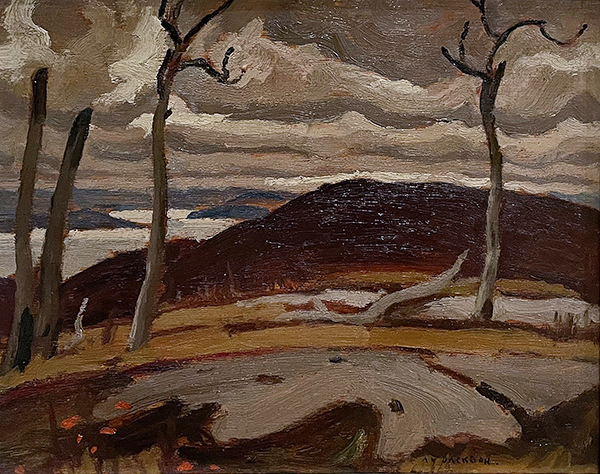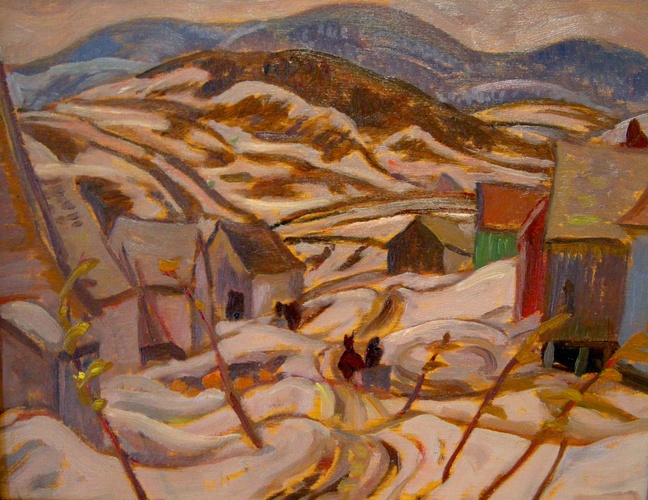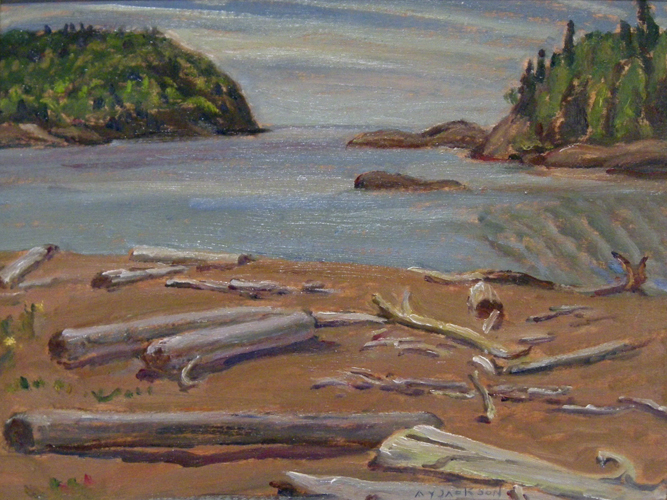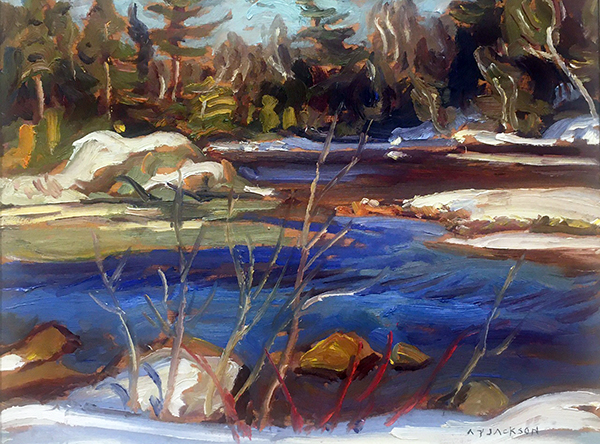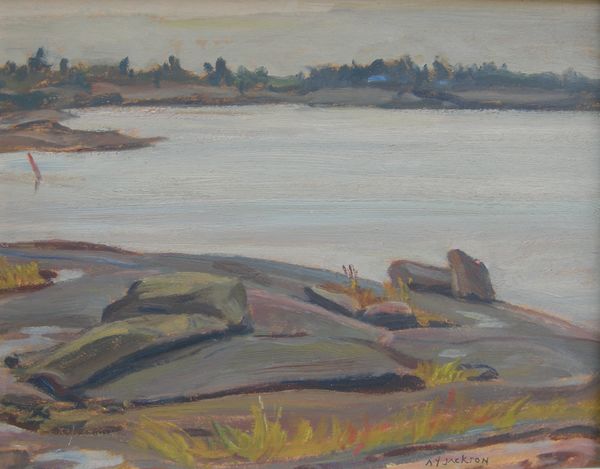A.Y. Jackson
Alexander Young Jackson (1882-1974) – Artist Biography
Born in Montreal, Alexander Young Jackson left school at the age of twelve and began work at a Montreal printing firm. In 1906, he undertook art studies at the Art Institute in Chicago. The following year he enrolled at the Académie Julian where he studied under Jean Paul Laurens for six months, then he traveled to Italy with others where they visited galleries in Rome, Florence and Venice. They returned to France and Jackson went to the village of Episy with a fellow student named Porter with whom he had lived in Paris. Jackson found much to paint at Episy: old farms, rolling country, the canal where barges were towed by mules, and for the first time (in France) he lived with people close to the land.
He left France when his funds were low and returned to Canada in 1910 where the “clear crisp air and sharp shadows” of Sweetsburg, Quebec, became the subject of his canvas “Edge of the Maple Wood”. During this period his painting was strongly influenced by the Impressionists. Then the work of Canadian artists Cullen and Morrice led him further in the discoveries of snow and other elements of Canadian subject matter which were to become an integral part of his work throughout his life.
On his return to Toronto, Jackson stayed at Lawren Harris’ studio in Toronto until the Studio Building was completed. There one day he was introduced to Tom Thomson who had accompanied Dr. MacCallum on a visit. Thomson was also an employee of the Grip Engraving Company. The two moved into the Studio Building in January 1914 and shared a studio. Thomson had soon inspired Jackson to visit Algonquin Park in February and March of 1914. Jackson also sketched that year with J.E.H. MacDonald and J.W. Beatty. In 1915, Jackson enlisted as a private in the 60th Battalion and after being wounded, returned later to the front as Lieutenant with Canadian War Records. As a war artist he created one of the finest collections of war paintings our nation possesses.
In 1919 he went to Algoma with J.E.H. MacDonald, Lawren Harris and Franz Johnston, making use of a railway box car as a studio which Harris had arranged. During that year, Jackson became a full member of the Royal Canadian Academy. On May 7th, 1920, the first exhibition of the Group of Seven opened at the Art Gallery of Toronto. The Group continued to exhibit until 1931. Each exhibition of the Group was met with great protest. In July of 1927 Jackson and Dr. Frederick Banting went north on the steamer ‘Beothic’ which had been chartered by the government to deliver supplies to the RCMP posts and to carry relief constables to the posts. They sketched at Pond Inlet, Devon Island, Ellesmere Island and other arctic locations. Jackson’s arctic sketches were exhibited at the Art Gallery of Toronto.
Jackson's great sense of adventure carried him from the east coast across Canada to the Rocky Mountains of the west. He made regular sketching trips to Quebec every spring and travelled to the far regions of Canada during the summer, including the Canadian Arctic. In the fall he would return to the Studio Building in Toronto (where he lived until 1955), spending the winters painting canvases. He continued this active lifestyle until he was in his eighties.
Bio c/o: A Dictionary of Canadian Artists, Volume II, compiled by Colin S. MacDonald, Canadian Paperbacks Publishing Ltd, Ottawa, 1979
Opposite: A.Y. Jackson in an Assisi studio, December 1912. Naomi Jackson Groves Fonds, Library and Archives Canada. © Estate of A.Y. Jackson / SOCAN (2022)
Selected Honours:
1941: Queen's University, Kingston awards Jackson an LL.D.
1946: Jackson is appointed a Companion of the Order of St Michael and St George
1962: The University of Saskatchewan awards Jackson an LL.D.
1967: Jackson is appointed a Companion of the Order of Canada
1970: Royal Canadian Academy awards Jackson its medal for lifetime achievement
1970: A. Y. Jackson Secondary School in Toronto is named after Jackson.
1976: A. Y. Jackson Secondary School in Ottawa is also named after him.
Artist Specialization: Jackson's active participation in seven Group of Seven exhibitions and in many contemporary shows of the time ensured that his images of a rolling, unpopulated land became indelibly imprinted on the Canadian consciousness. All his life Jackson remained a leading proponent of the Group's land-based nationalism. Once his painting style was established it shifted only to accommodate newly explored territory. Never abandoning his interest in landscape, he painted Canada's most distinct and identifiable climates, especially favouring winter, and sought remote regions, including the Arctic, which he visited in 1927 and 1930. But he frequently returned to the gentler regions of his youth, including Québec and Georgian Bay. In Québec in 1926, he painted "Barns," a canvas that exemplifies his use of simple, curving forms and temperate colour to present a powerful, enduring image.


